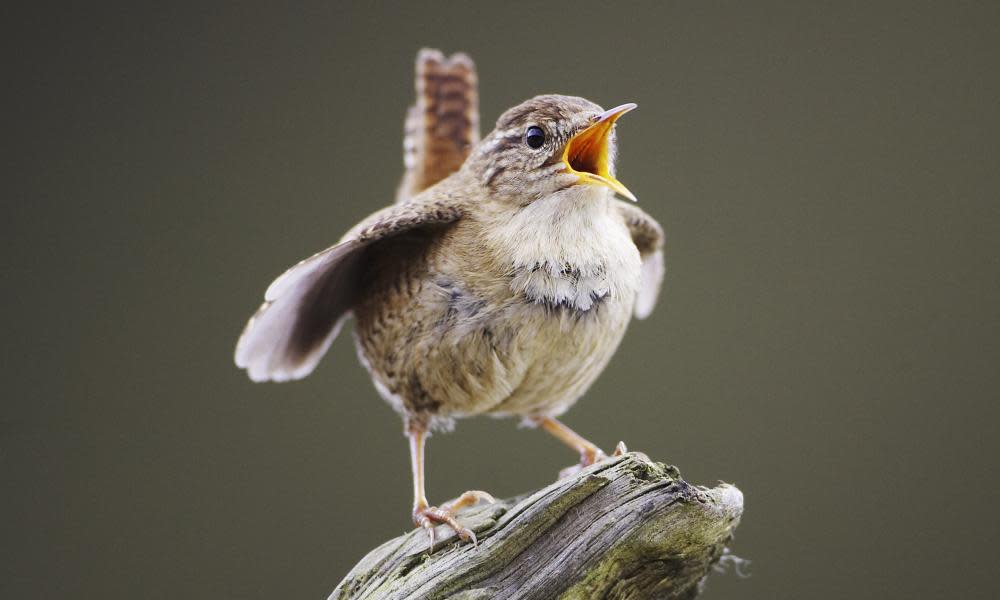Birdwatch: a short but sweet wren sighting – rather like the bird

Ask most people what the most common bird in Britain is and the chances are they will not be able to give the correct answer. That is because it is not the blue tit, blackbird, sparrow, starling or robin – but the wren.
One reason why the wren is top of the avian league table is that it can live virtually anywhere. You will find wrens in urban gardens and rural woods, on blasted heaths and far-flung islands: wherever there are nooks and crannies for them to find food and make their nest.
So, if wrens are so common and widespread, why do we hardly ever see one? Mainly because they do not really behave like other songbirds, which tend to feed out in the open on lawns or bird feeders. Instead, they are the consummate skulkers: hiding away, mouse-like, in the leaf litter. Even when they move from place to place, they usually do so in a blur.
But every now and then, I get a really good look at one of these charismatic little birds. The other day, on my local patch, a wren hopped out of the ferns, posed for a moment in the autumn sunshine, then plunged back out of sight. Short but sweet – rather like the bird itself.
The Wren: A Biography by Stephen Moss (Square Peg, £12.99)

 Yahoo News
Yahoo News 
